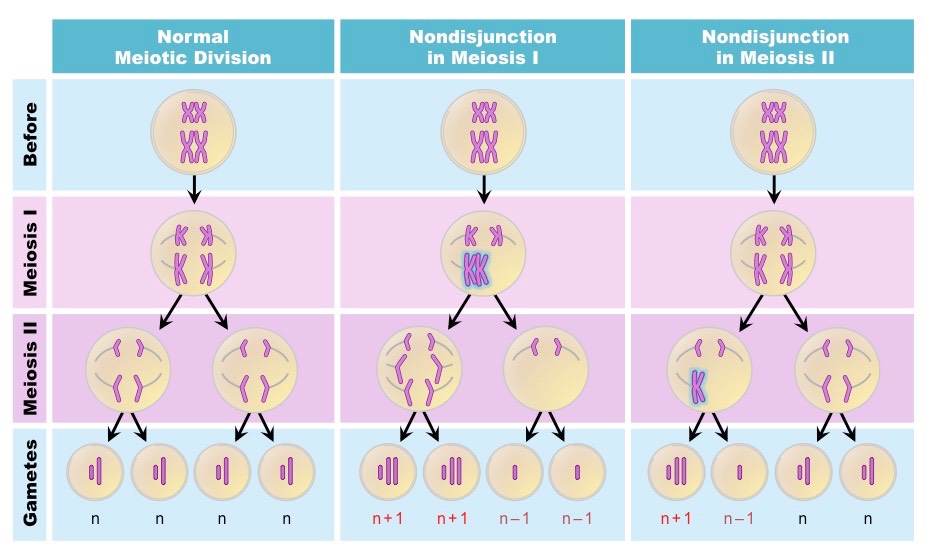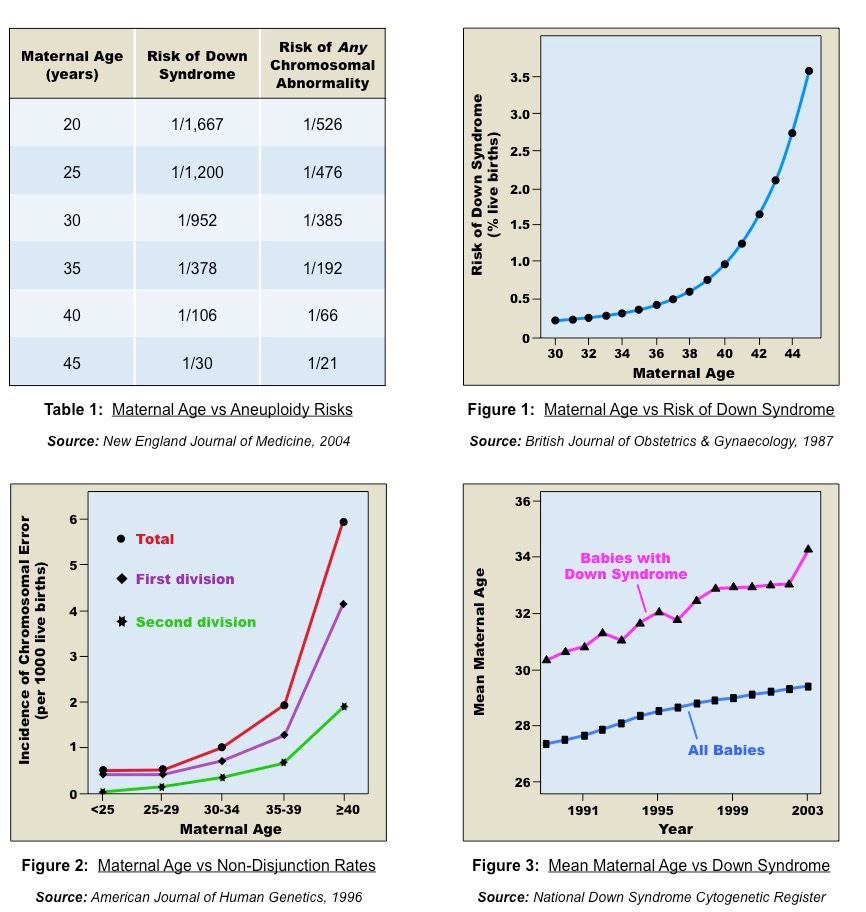![]()
Application:
• Non-disjunction can cause Down syndrome and other chromosomal abnormalities
Non-disjunction refers to the chromosomes failing to separate correctly, resulting in gametes with one extra, or one missing, chromosome (aneuploidy)
The failure of chromosomes to separate may occur via:
- Failure of homologues to separate in Anaphase I (resulting in four affected daughter cells)
- Failure of sister chromatids to separate in Anaphase II (resulting in only two daughter cells being affected)
Non-Disjunction

Chromosomal Abnormalities
If a zygote is formed from a gamete that has experienced a non-disjunction event, the resulting offspring will have extra or missing chromosomes in every cell of their body
Conditions that arise from non-disjunction events include:
- Patau’s Syndrome (trisomy 13)
- Edwards Syndrome (trisomy 18)
- Down Syndrome (trisomy 21)
- Klinefelter Syndrome (XXY)
- Turner’s Syndrome (monosomy X)
Down Syndrome
Individuals with Down syndrome have three copies of chromosome 21 (trisomy 21)
- One of the parental gametes had two copies of chromosome 21 as a result of non-disjunction
- The other parental gamete was normal and had a single copy of chromosome 21
- When the two gametes fused during fertilisation, the resulting zygote had three copies of chromosome 21
![]()
Application:
• Studies showing age of parents influences chances of non-disjunction
Studies show that the chances of non-disjunction increase as the age of the parents increase
- There is a particularly strong correlation between maternal age and the occurrence of non-disjunction events
- This may be due to developing oocytes being arrested in prophase I until ovulation as part of the process of oogenesis
Other studies also suggest that:
- The risk of chromosomal abnormalities in offspring increase significantly after a maternal age of 30 (Table 1 / Figure 1)
- There is a higher incidence of chromosomal errors in offspring as a result of non-disjunction in meiosis I (Figure 2)
- Mean maternal age is increasing, leading to an increase in the number of Down syndrome offspring (Figure 3)
Studies into the Development of Chromosomal Abnormalities

